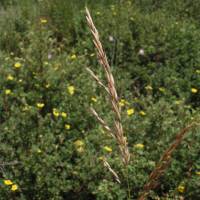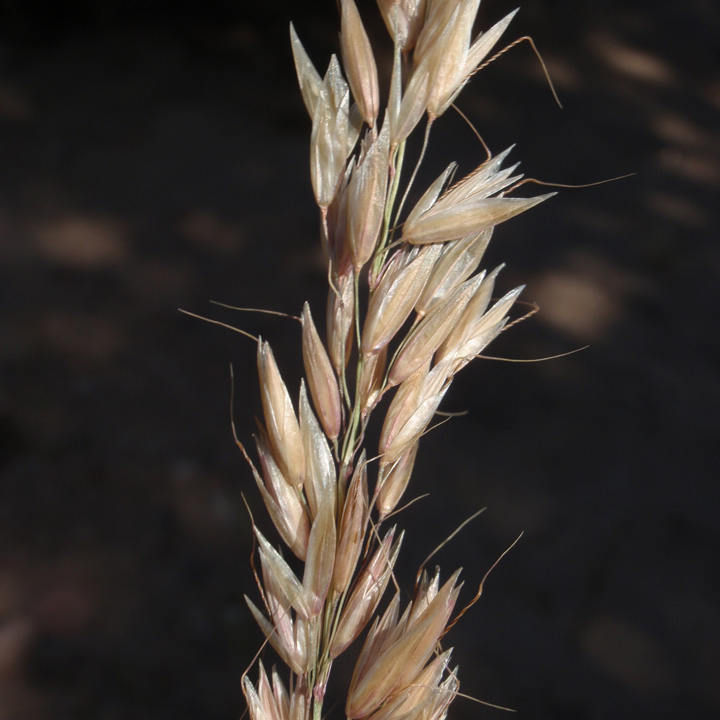|
|
 Seedhead Max Licher @http://swbiodiversity.org, Usage Rights: Creative Commons Attribution-ShareAlike (CC BY-SA) |  Spikelets Max Licher @http://swbiodiversity.org, Usage Rights: Creative Commons Attribution-ShareAlike (CC BY-SA) | | | | |
|
| | |
Origin: Introduced Season: Cool
Habitat Description: Moist or dry meadows, edges of woods, stream sides, rocky outcrops, and disturbed areas such as fields, fence rows and roadsides.
Plant Communities:Interior Chaparral, Semidesert Grasslands, Pinyon Juniper Woodland, Montane Conifer Forest, Riparian, Disturbed Areas
Elevation: 5000 - 7500 feet
Desc:
Tall oatgrass is a loosely-tufted grass with erect, smooth stems 28 to 70 inches tall that are occasionally bulb-like at the base. It is sometimes rhizomatous. It begins growth in early spring and remains green late into the fall. Roots are yellow.
Identification Notes: Tall perennials with flat blades. Seedheads are narrow; spikelets are 2-flowered, the lower flower is male, the upper flower has male and female flower parts, disarticulates above the glumes. awn on the first glume twisted, attached below mid-length.
Grass Type: Perennial bunchgrass Rhizomes: Y Stolons: N
Large Dense Clump (> 2 feet): N Bushy (highly branched): N
Height with Seedheads: Greater than 36 inches
Seedhead Structure: Branched - contracted Seedhead Droops: Y
Flowering Period: Jun - Sep
Number of Flowers per Spikelet: Multi-flowered Spikelets One-sided: N
Awns: 1/4 inch to 1 inch Three Awns: N Awns Bent: Y
Flower and Seedhead Notes: Seedhead is open and spreading to 3 inches wide, 3 to 12 inches long, green, shiny; sometimes purple-tinged and spikelet-bearing to its base. Lower sterile floret lemma with a stout, twisted or bent awn. Upper fertile floret has a bristle-tipped lemma.
Blade Hairy:
Y
Blade with White Margins:
N
Blade Cross section:
Flat
Blade Notes:
There are hairs on the surface of the leaf sheath, but the hairs do not have blisters at their bases. Leaf blades are flat and rough to the touch. They are from 3/8 to 3/4 inches wide.
Sheath Hairy:
Y
Tuft of Hairs at top of Sheath or Collar:
N
Ligules:
Membranous and hairy
Auricles (Ear-like lobes at collar area:
N
Forage Value:
Useful for erosion control on surface mined lands and marginal pastureland. Grown as a forage grass, it yields a palatable hay with high amounts of phosphorus and calcium in its tissues. It does not withstand heavy grazing.
|
|